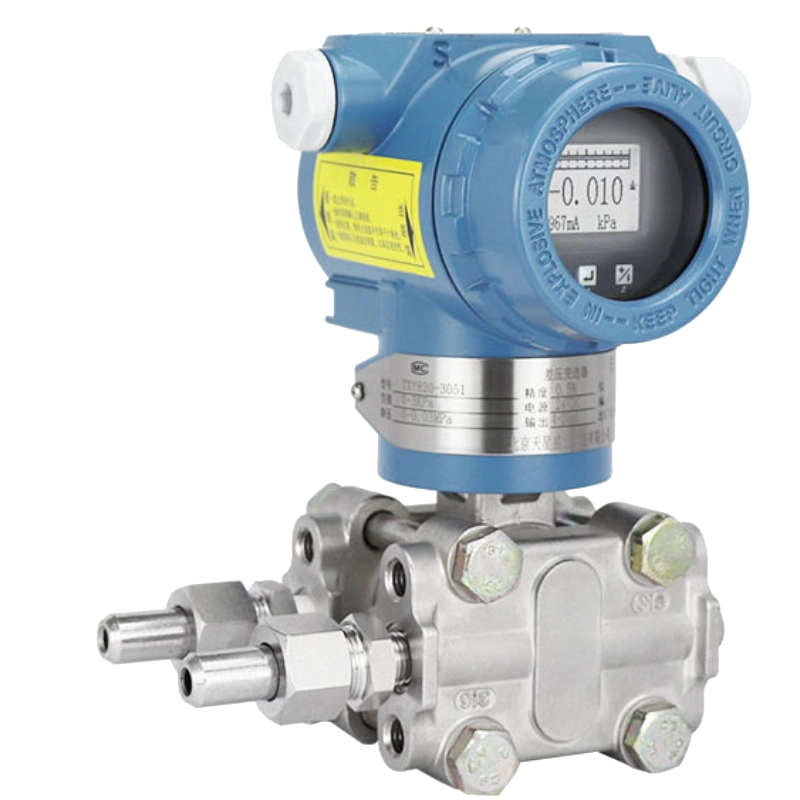خلية الحمل في النفط والغاز: تحسين الكفاءة والسلامة
وقت الإصدار: 2025-07-19
في الإنتاج الصناعي الحديث، يتطلب استخراج ونقل وتخزين النفط والغاز معداتٍ معقدة وتقنياتٍ متطورة. ومن بين هذه المعدات، تُستخدم خلايا الحمل، باعتبارها معداتٍ أساسية، على نطاقٍ واسع لتحسين الكفاءة التشغيلية وضمان السلامة. سواءً على منصة الحفر أو في عملية نقل الأنابيب تحت الأرض، لا يُمكن إغفال دور خلايا الحمل. فهي لا تُوفر بياناتٍ آنية فحسب، بل تُساعد الشركات أيضًا على ضمان التشغيل الآمن والتحكم الدقيق في المعدات في البيئات القاسية.
تطبيق خلية الحمل في صناعة النفط والغاز
يُعدّ استخراج النفط والغاز صناعةً عالية المخاطر. يعتمد استخراج الموارد ونقلها على تشغيل معدات واسعة النطاق، ويؤثر وزن هذه المعدات وضغطها وحمولتها وعوامل أخرى بشكل مباشر على كفاءة الإنتاج وسلامته. في هذا السياق، خلية الحمل يقدم مساعدة كبيرة، وخاصة في الجوانب التالية.
المراقبة في الوقت الفعلي والتحكم في الحمل
يمكن لخلية الحمل مراقبة حمولة معدات النفط والغاز آنيًا. هذا مهم بشكل خاص أثناء عملية الحفر. قد يؤدي تعرض المعدات لضغط زائد إلى تلفها أو عدم استقرار تشغيلها. بفضل خلية الحمل، يمكن للمشغلين اكتشاف المخاطر المحتملة في الوقت المناسب لتجنب الحوادث، وضبط معايير تشغيل المعدات آنيًا لضمان السلامة.
تحسين كفاءة الإنتاج
في عملية استخراج النفط والغاز، يمكن استخدام خلية الحمل لقياس المواد، والتحكم في نسبة خلط السوائل والغازات أثناء النقل، وما إلى ذلك. من خلال وزن وإدارة المواد الخام والوقود والمواد الكيميائية، يمكن تقليل النفايات، ويمكن تحسين استخدام الموارد، ويمكن تحسين كفاءة الإنتاج الإجمالية.
منع فشل المعدات
يمكن لخلية الحمل مراقبة تغيرات حمولة المعدات، وخاصةً مراقبة أوزان المعدات المهمة مثل خزانات التخزين وخطوط الأنابيب ومعدات النقل. في حال تجاوز حمولة هذه المعدات النطاق المحدد، فقد يتسبب ذلك في تلفها أو حتى حوادث سلامة. من خلال مراقبة بيانات الوزن آنيًا، يمكن اكتشاف أي خلل مسبقًا واتخاذ الإجراءات اللازمة لمنع تعطل المعدات بفعالية.
المزايا التقنية لخلية الحمل
مع التطور المستمر للتكنولوجيا، ازداد استخدام خلايا الحمل في مجال النفط والغاز. وتتميز بالمزايا التالية:
دقة عالية واستقرار
غالبًا ما تكون بيئة إنتاج النفط والغاز معقدة وقاسية، لذا يجب أن تتمتع خلايا الحمل بدقة واستقرار عاليين للغاية. خلايا تحميل حقول النفط استخدام تكنولوجيا الاستشعار المتقدمة لتوفير بيانات دقيقة ومستقرة في البيئات القاسية، وهو أمر بالغ الأهمية لإدارة إنتاج النفط والغاز بشكل أفضل.
القدرة على مقاومة الزلازل والتداخل
غالبًا ما تتعرض معدات استخراج النفط والغاز لاهتزازات وصدمات شديدة، وقد تتداخل مع أجهزة الاستشعار العادية، مما يؤدي إلى بيانات غير دقيقة. يُراعي تصميم خلايا الحمل عالية الجودة هذه النقطة تمامًا، وتتميز بقدرات مقاومة للزلازل والتداخل، ويمكنها الحفاظ على موثوقية عالية للبيانات حتى في ظل تأثير الاهتزاز أو العوامل الخارجية الأخرى.
المراقبة عن بعد وتحليل البيانات
تتميز العديد من خلايا الحمل بوظائف المراقبة عن بُعد ونقل البيانات. يمكن للمشغلين مراقبة حالة تشغيل المعدات عن بُعد عبر منصات رقمية دون الحاجة لزيارة الموقع. ومن خلال نقل البيانات وتحليلها آنيًا، يمكن للشركات اتخاذ قرارات أفضل، وتحسين عمليات الإنتاج، وتقليل التدخل البشري، وتعزيز السلامة.
خاتمة
يعد تطبيق خلايا الحمل في صناعة النفط والغاز أحد المظاهر المهمة للتكنولوجيا الحديثة في المجال الصناعي. خلايا الحمل عالية الجودة ليست مجرد أداة، بل هي أيضًا وسيلة مهمة لضمان سلامة الإنتاج، وتحسين كفاءة العمل، وتقليل هدر الموارد. مع التقدم التكنولوجي المستمر، ستلعب خلايا الحمل دورًا أكثر أهمية في جميع جوانب قطاع النفط والغاز. فهي تزود الشركات ببيانات تشغيلية أكثر دقة، كما توفر دعمًا قويًا لضمان سلامة الموظفين وموثوقية المعدات.


 />
/> />
/>